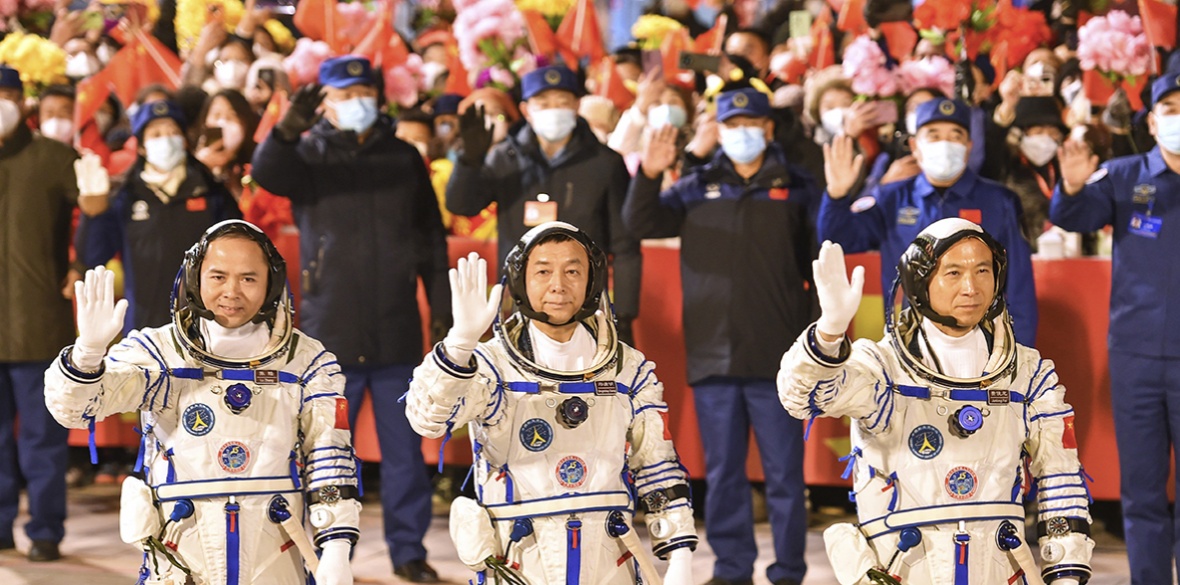This is the last article you can read this month
You can read more article this month
You can read more articles this month
Sorry your limit is up for this month
Reset on:
Please help support the Morning Star by subscribing here
ACCORDING to Walt Rostow’s infamous 1960s work, A Non-Communist Manifesto, society passes through five stages of development with technology, entrepreneurialism, individualism and competition as the key drivers.
China would appear now to be transitioning through Stage 4: the drive to maturity — a long period of sustained growth and structural change with modern technology extending across the economy, poverty falling, and an increasingly urbanised workforce. “Infrastructure and communications, education and the media, professionalism, progress to high levels with more effective leadership of a population realising new opportunities as they strive to make the most of their lives.”
Stage 5: the age of mass consumption then reaches the wealth levels of the West — citizens, hardly remembering the subsistence struggles of previous stages, live in comfort, and spend their days enjoying the arts and music.
Modernisation theory is of course a fantasy designed to privilege the way of the West and camouflage its imperialist nature. Only 30 or so countries are considered developed: comprising less than one-fifth of the world’s population, their advance took place at the expense of class polarisation, environmental destruction and plunder, war and colonialism.
China plans to bring another fifth of the world’s population up to modern standards, but by following a distinct path of green development, common prosperity and peaceful negotiation with the rest of the world — all seen as essential features of socialist modernisation, Chinese style. Needless to say, this is massively ambitious.
China has followed its own stages: first Mao restored the sovereignty necessary to the country’s material progress against the forces of imperialism, establishing an industrial base; then Deng’s “reform and opening up” unleashed the fast-paced growth that raised China’s economy to second biggest in the world, with the private sector’s dynamism contained within the frame of public ownership and control.
Now midway along the “drive to maturity”, China is looking ahead to transition from these initial primary stages of socialism to a basic, then to an advanced socialist modernisation by 2035 and 2049 respectively.
Advancing socialism
To engineer the kind of changes in China’s economic and social structure necessary, Xi recognises the need for more state control over the disorderly expansion of capitalism.
Readjustments between the state and private sector and between capital and labour in the private sector, in particular, will however be gradual. The super-rich, a large private sector, capital markets and foreign investment will all be part of China’s socialist modernisation. Nevertheless, the Chinese system is to operate very differently from the advanced economies of the West.
The Chinese approach sees consumption and investment not as separate but integrally connected. Whilst consumption is taken as fundamental in stimulating economic growth, investment is seen as key to improving the supply structure. Allowing the market to play a decisive role in the distribution of resources at the same time as giving full play to the strategic supporting role of the state-owned economy, the Chinese system manages supply and demand together.
Xi has pledged to expand the real economy and increase domestic demand. Doubling the middle-income group to 800 million in 15 years will significantly increase disposable income. More weight will be given to work remuneration in the overall distribution of income and personal income is to grow basically in step with economic growth with pay rising as productivity increases.
On the supply side, investment is to be guided strictly towards state-designated areas, redirecting flows of capital from the unproductive finance and property sectors towards innovation in indigenous producer goods including those driving the green transformation. To this end, whilst capital market functions are to be improved, the proportion of direct financing is to be increased.
The next step in China’s modernisation is to build up its contingent of skilled specialists in science and engineering.
By working at both ends of supply and demand, the “dual circulation strategy” looks to complete the exchange of producer and consumer goods within the domestic market, curtailing the drain of unpaid labour overseas through an unequal exchange.
Meanwhile, strategic industrial planning allows for trilateral co-ordination together with fiscal and monetary policies.
The complexities here demand more effective governance — democratic oversight and legal practices — at all levels. China operates a system of consultation and participation involving other democratic parties through the people’s congresses, workers’ congresses in enterprises, and community-level and voluntary organisations. This is a controlled approach to democracy: opening the door too quickly is seen as risking ill-conceived laws and poor decisions creating disorder leading to demoralisation and thereby undermining public motivation in democratic participation.
On security
As societies approach high mass-consumption levels, modernisation theory claims they reach a choice between concentrating on military and security issues or equality and welfare issues.
Western analysts have convinced themselves that China is choosing the former, kicking up a great fuss over Xi’s Congress report, claimed to be opting for national security over the economy — as if the purpose of the state is not to put the security of the people first.
Indeed Xi stated that the people’s security was the ultimate goal: as well as upgrading military defence, his report covered issues of food, environmental and energy security, and, significantly, addressed not just national but common security, demonstrating the continuing commitment to peaceful development.
For China, a peaceful external environment is seen as necessary for its success. However, Xi’s report finds that “the deficit in peace, development, security, and governance is growing.” It is necessary, then, to “prepare for the unexpected” and “be ready to withstand high winds, choppy waters, and even dangerous storms.”
The West no longer shows the world its future.
China’s socialist modernisation is being honed through the struggle against US imperialism and hegemonism — the imposition of sanctions, interference from outside and long-arm reach of the “rules-based order.” To build resilience, Xi counsels, “we must maintain self-confidence and stand on our own feet.”
With new challenges — pandemics, climate change — and new opportunities at the frontiers of technology, Deng’s advice to “learn from the West” is no longer adequate.
China’s modernisation also involves a mental transition away from copying the advanced capitalist countries, looking instead to its own resources for ideas on how to do things. Marxist ideology is to be combined with the best of China’s traditions — for example, the Confucian approach of selecting officials based on merit, and the Taoist promotion of harmony between people and nature.
China began opening up to the world with four special economic zones along its coast 44 years ago. Catching the globalisation wave, it was to become the “workshop of the world.” Given its huge scale, China’s new modernisation drive will surely be world-shaking.
For others, there are challenges as well as opportunities. But where Western imperialism locks in one-sided arrangements, China does not interfere politically to undermine the bargaining position of others. Insisting that countries have the right to choose their own development path, it backs developing countries’ rights to special and differential treatment in the WTO, to common and differentiated responsibilities at climate summits, and opposes the imposition of IMF conditionalities.
If China does succeed in reducing the gap between rich and poor, creating a majority middle-income society without the consolidation of a privileged middle class; if it can uphold its commitments on decarbonisation — and it is already over-fulfilling these; if it can advance domestically without the subordination of others, rather opening up spaces for their development, this would indeed be completely transformational. The next 27 years will tell.











